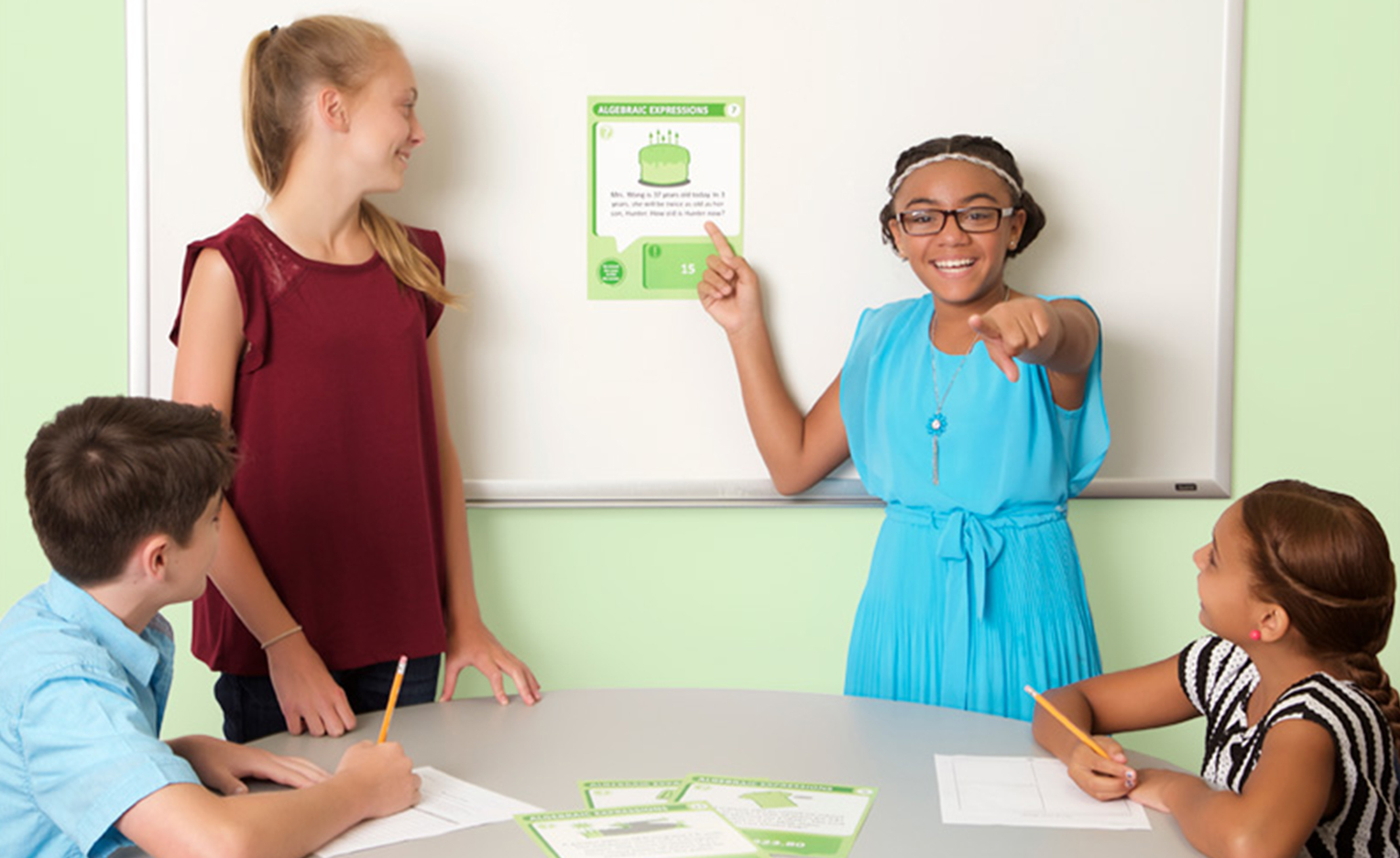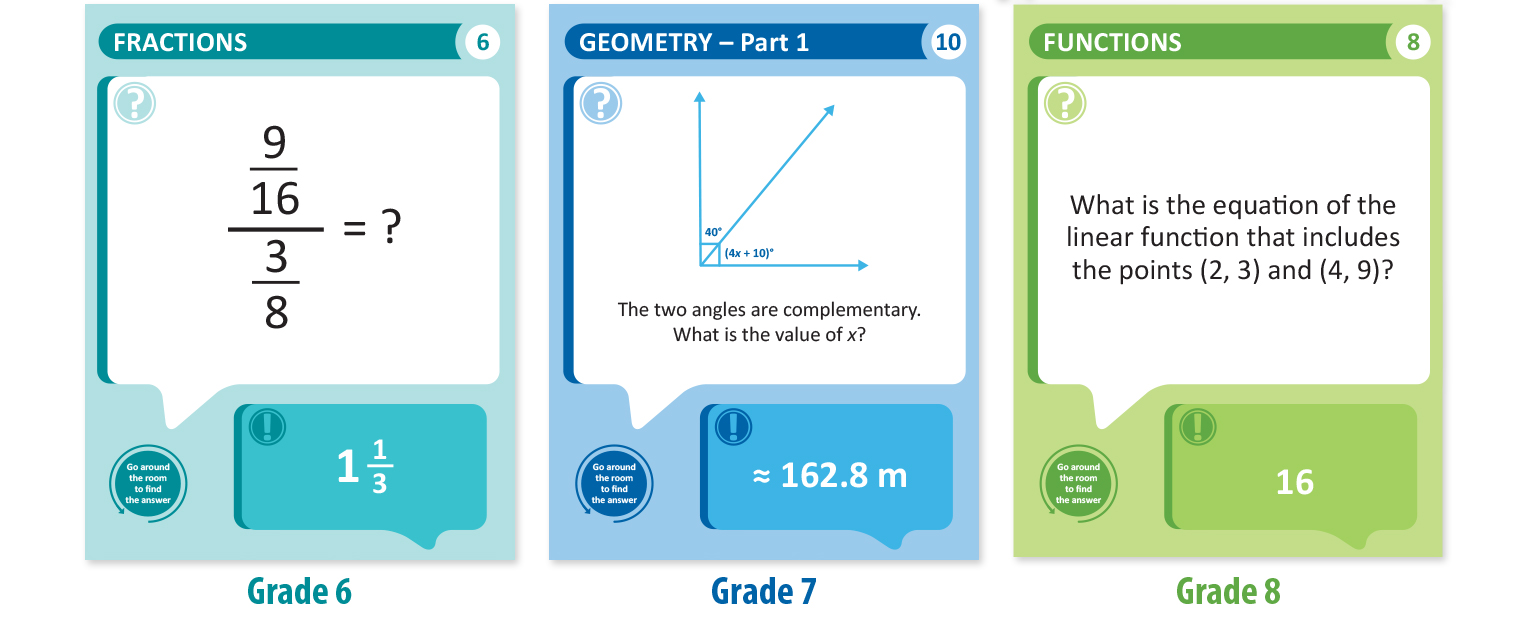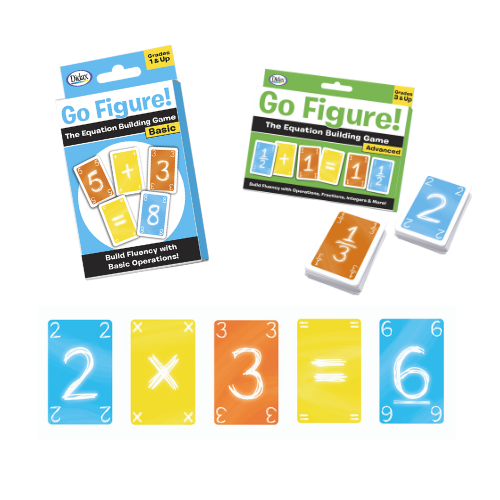A New Approach to Problem Solving for Middle School
- By Camille Mattson
- Nov 16, 2017
Over There! An Out-of-Your Seat Math Review!

As a teacher for over 15 years, I recognize that the kinds of experiences that teachers offer their students play a major role in determining the extent and quality of students’ learning. For example, rich problem-solving activities help students build understanding by actively engaging in tasks and experiences designed to deepen and connect their knowledge. Playing math games affords students the opportunity to build understanding while encouraging strategic thinking as students will have different approaches for solving problems. Using classroom activities and games is also a great way to check in on their progress as well as to provide reinforcement of key concepts. I like problem-solving activities that are easy to put together, fun, and require all students to participate.
I have used the ”I Have, Who Has?” strategy, but it sometimes puts kids on the spot, leaving them feeling anxious rather than more confident in their problem-solving abilities or prepared for their assessment. Years ago, I developed a different type of game – one that follows a similar problem-solving sequence but enables students to collaborate in groups, show their work, and to get out of their seat, which is great for the kinesthetic learners. I was using this strategy the other day in my classroom of 30 students and a principal came in and the kids were so engaged, not one of them even noticed that he was there. When other teachers see me using this strategy, they have asked about it and tried it in their own classrooms. It promotes problem-solving in an effective, fun, and engaging way.
I developed Over There and have used it in my classroom for years. My game features oversized question and answer cards that can be placed around the room. Working in teams, the kids solve the question on their card and go Over There! to find the answer on another card. They continue to do this until they have visited every card and come back to the one they started with. What’s great is that the students are talking and thinking about the problem, sharing strategies and collaborating with other students if they get stuck. The teacher is free to observe how students interact and to see the problem-solving process at work. It is also a great review for a substitute teacher to facilitate. With over 80 problem-solving cards, representing each of the domains, you can use the game over and over in the class. Here’s a sample of some of the questions that are included:

As you look for new ideas for your class here are some key considerations. Strong problem-solving and review activities and games must provide:
- A variety of unique problem-solving opportunities
- Ways for students to collaborate
- Tools for assessment
- Fun, engaging experiences for students
Helping students develop problem-solving and communication skills is critical to their future success. By incorporating these skills into an engaging game, we can make learning fun and build understanding at the same time.

By: Camille Mattson
6th Grade Teacher
Jackson Middle School
Champlin, Minnesota








 © 2023 Didax, Inc. All Rights Reserved.
© 2023 Didax, Inc. All Rights Reserved.